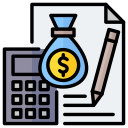Use Proven Techniques: Zero-Based, Driver-Based, and Envelopes
Start each cycle at zero and justify every line from scratch. This exposes zombie costs—subscriptions, fees, and perks that quietly compound—and frees resources for initiatives that actually drive growth.
Use Proven Techniques: Zero-Based, Driver-Based, and Envelopes
Tie expenses and revenue to operational drivers like leads, conversion rate, average order value, headcount, and delivery volume. When assumptions change, the whole model updates, guiding quick, confident adjustments.
Use Proven Techniques: Zero-Based, Driver-Based, and Envelopes
Create fixed envelopes for key categories—ads, software, travel—and cap spending at agreed limits. Simple visual envelopes help managers respect constraints while experimenting within safe, transparent boundaries.
Use Proven Techniques: Zero-Based, Driver-Based, and Envelopes
Lorem ipsum dolor sit amet, consectetur adipiscing elit. Ut elit tellus, luctus nec ullamcorper mattis, pulvinar dapibus leo.




